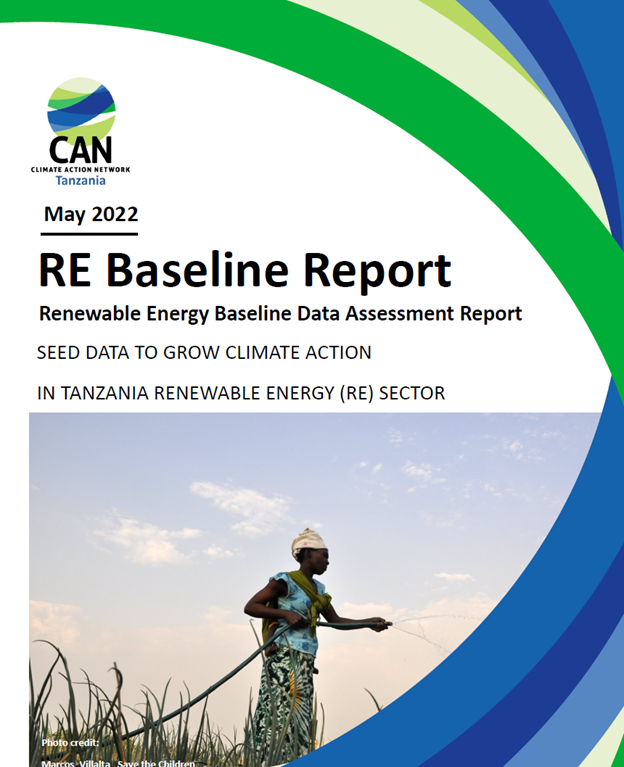
Published: MAY 23, 2022
There is an increasing access to electricity through national grid from 2016 to 2020, however this assessment report reveal a low connectivity of households to the national grid, an indication for an opportunity to scale up DRE resources that offers accessibility and connectivity to affordable and clean energy for the last mile. For many households connected to the gridy uses electricity for lighting and not for income generating activities and production purposes. Most of the electricity end users uses electricity at lower tires and basically for lighting purposes and thus need of more push for upgraded higher tiers usability.
This will contribute to an increased connected and users of electricity power for income generating activities. Additionally, most of the rural areas in central Tanzania are still none electrified. Rural electrical authority is penetrating to some of the village areas with a significant number of residents congregating under one area. Most of the scattered household villages in the rural areas are left behind by the REA programs and initiatives. Decentralized renewable energy (DRE) remain to be the very only solution to the most scattered household villages in Central Tanzania.
There is a number of legislations and coordination framework in place however, policies specifically intending to scale up exploitation, investment and use of renewable energy and energy efficiency resources are lagging behind leaving a room for prolonged period of time for such green energy to insignificantly contribute in addressing energy challenges in the country.
Inadequacy of coordination among the existing energy policy of 2015 and other sector plans such as agriculture and forest continue to slow the pace in tapping potentials along renewables in the country. Furthermore, national commitments to international efforts such as Paris Agreement through nationally determined contributions (NDCs) and Sendai frameworks on Disaster Risk Reduction experience limited linkages to national planning and implementations.
In addition, the lack of awareness, limited education levels, human and financial resources remain to be the key hindrances towards exploitation and use of renewable energy resources in Tanzania. The increased education and awareness will initiate the anxiety to establish, develop and exploit a wide range of renewable energy technologies for ecological and socio-economic transformation in Tanzania.
6.2 Recommendations
In line with assessed baseline renewable data potentials, power generation and various initiates in the country pertaining renewables stewardship in Tanzania, this report recommend the following:
o Short and long-term projections
Deliberate initiatives and strategies by the government and other stakeholders including different developmental partners, CSOs, NGOs, academia and research institutions to put forward and mobilize human and financial resources for short and long -term projections, and plans for advancement in terms of research, technological transfer and exploitation of renewable energy resources in Tanzania.
o Mapping and quantify RE potentials
Continue enhancing cost effective mapping and quantify all renewable energy potentials including uranium, geothermal, solar, wind and alike in the north, south and central regions of Tanzania. This will motivate investment rates as well ensure the reliability to such high demanding capital projects.
o Develop decentralized renewable energy
The mini and off grid companies, NGOs, Government and other developmental partners have to increase focus on villages with scattered household patterns through development of decentralized renewable energy (DRE) technologies, so as to increase energy access and connectivity which in turn addresses this dominant challenge.
o Develop stand-alone RE policy
The current legal and institutional framework in the country inadequately enhance a wide platform for the renewable energy projects establishment and development. The government needs to put forward the stand-alone renewable energy policy and or energy efficiency policy that will ensure equal subsidy in renewable energy development between IPPs and TANESCO in electricity generation models, and therefore pin point the left behind highly taxed clean energy technologies and alike to fast track usability of clean energy technologies in the country. The policy will have to ensure stipulated guidelines on ensuring quality renewable energy products and standards so the users can rely on them.
o Raising Awareness:
NGOs, International Organizations, the Government and other development partners need to keep a focus on how to support for raising awareness and education on the alternative energies in the country. Most of the communities are still reluctant to the use due to local beliefs, worries on their safety and thoughts on the unreliability. More important, many key energy practitioners and decision makers within the government and the parliament face limited understanding, knowledge and awareness on the role that renewable energy technologies could contribute in addressing community socioeconomic challenges. Learn more and read the full reoprt: https://cantz.or.tz/publications/21
